Inside the Secretive World of High-End, Ultra-Luxe Art Bongs
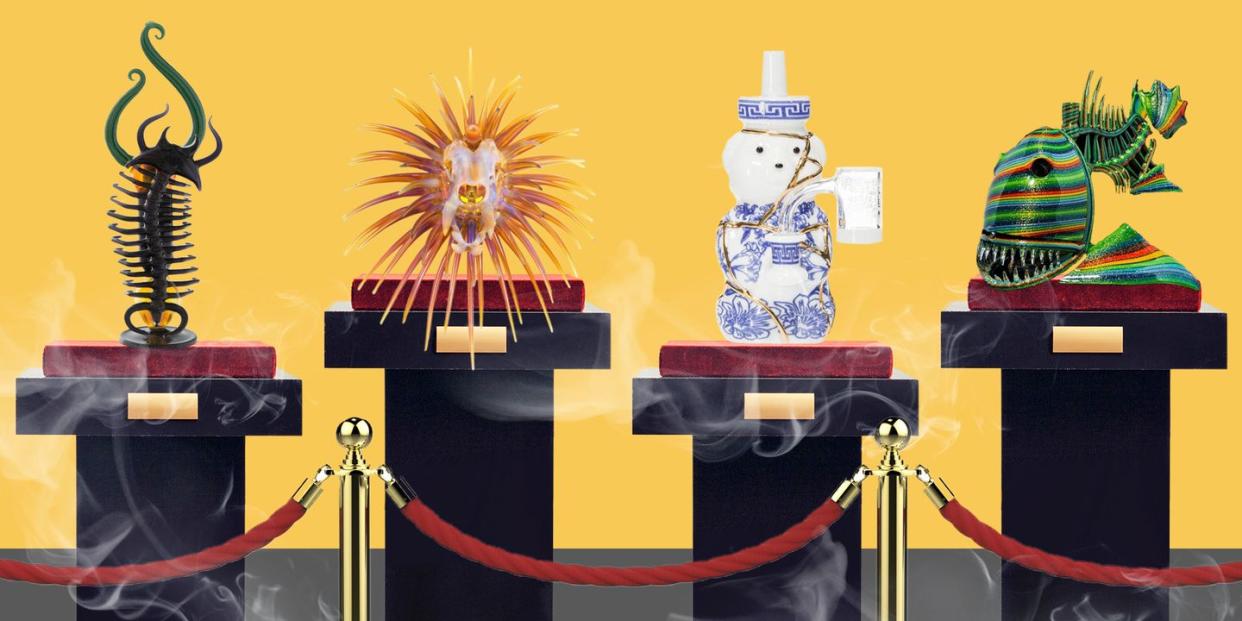
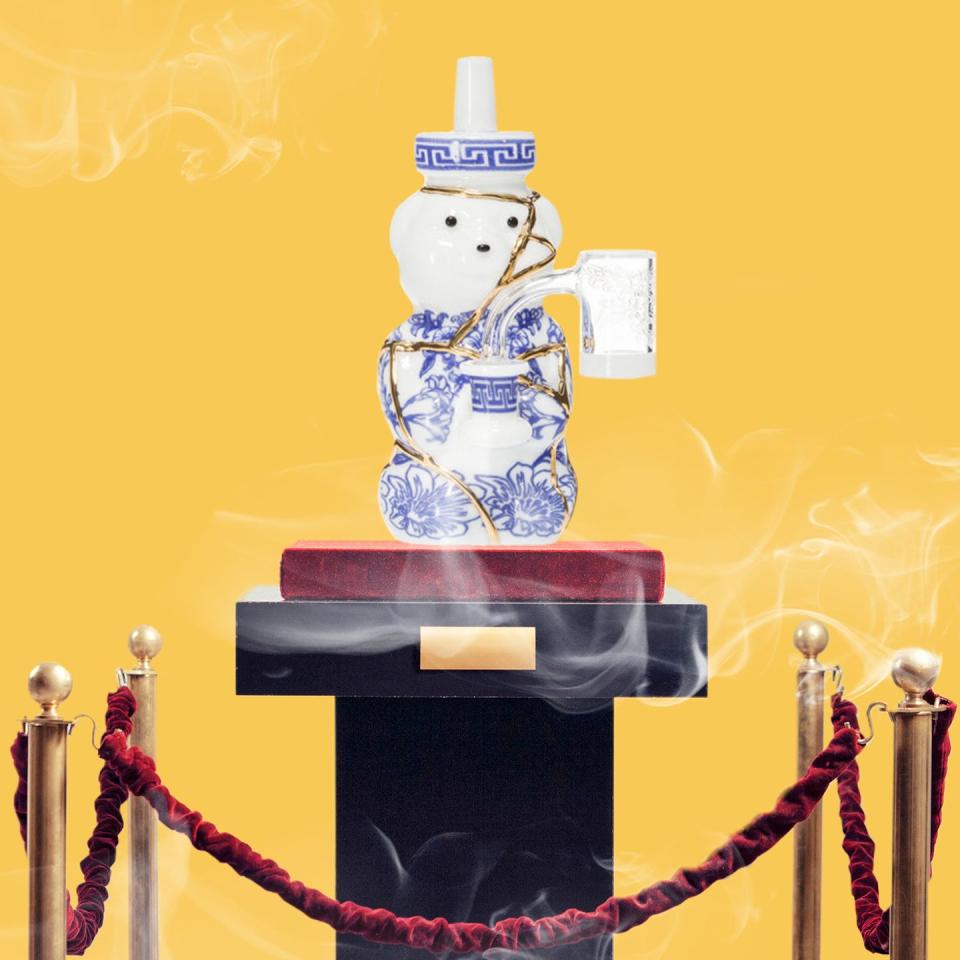
Tommy Chong, the hairier half of pot-blazing duo Cheech and Chong, was greeted by the feds one morning in 2003, guns drawn as they stormed his house. He was soon charged with selling bongs and marijuana pipes, which had been distributed online through his family's company, Nice Dreams Enterprises. This was illegal, sure. But the nine months Chong served in prison, plus monetary punishments, were widely considered pretty fucking over-the-top within the industry. It seemed like the feds were trying to make an example of the comedian for making a mockery of drug laws in America. Along with Chong, more than 50 others were targeted for selling glass pipes at head shops or distributing them online. "People selling drug paraphernalia are in essence no different than drug dealers," said a DEA administrator at the time.
Operation Pipe Dreams, as it was called, was a warning to the cannabis world that in 2003, the government believed everything they did was dirty, illicit, and wrong.
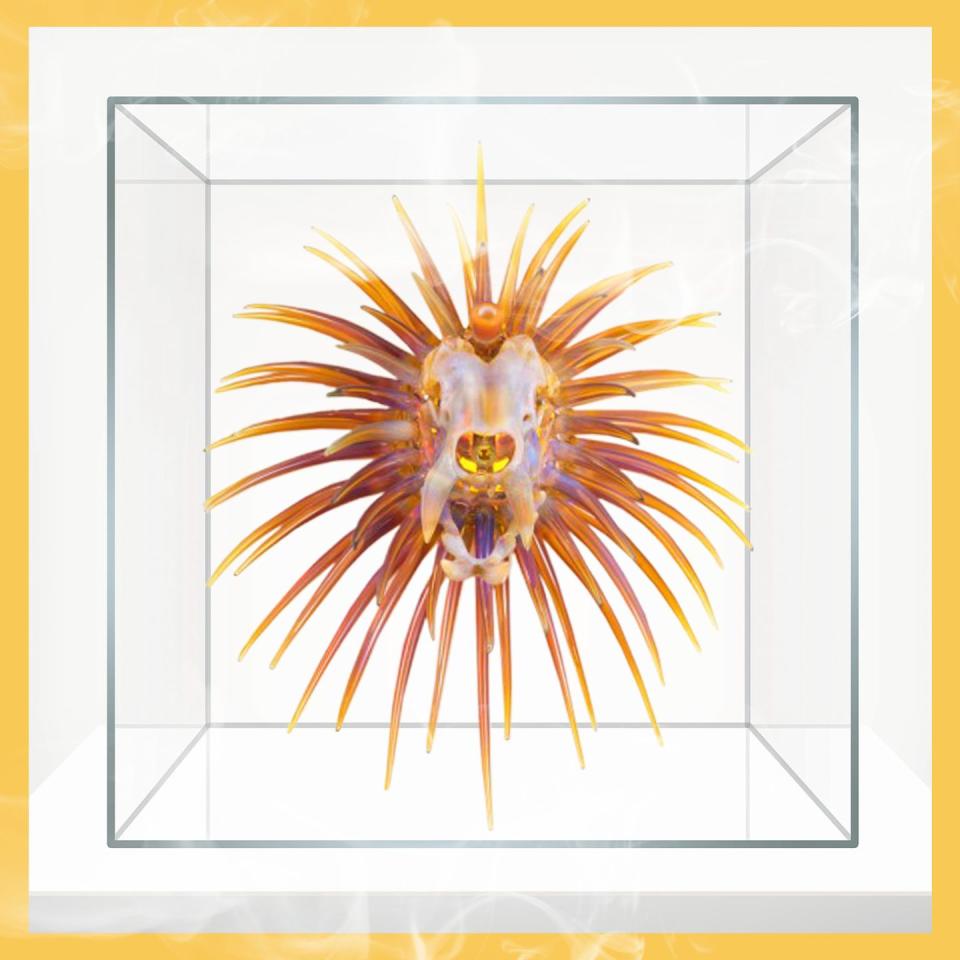
A lot has changed since then. Technically, it is still illegal to sell drug paraphernalia like bongs in the eyes of the federal government. But enforcement of that law is nearly non-existent in most places, and head shops masquerade behind signs that say their products are “for tobacco use only.” Cannabis is everywhere, for everyone, if you can walk a legal line. But the bong itself still seems sketchy as hell, a reminder of dumb stoner movies and hiding the stench of weed from your dorm's RA. It’s an artifact of a bygone era that’s more or less gone up in smoke.
Not these bongs, though. On Monday, July 22, three of the most intense bongs you’ve ever seen will go up for auction at Heritage Auctions in Chicago—the first public, fine art auction of bongs to ever take place in America, at the third-largest auction house in the world. Melding highbrow artistry with lowbrow culture, they’re part of a small family of astonishing glass bongs that sell for thousands, and even hundreds of thousands of dollars to anyone who wants to buy a piece they’d be proud to display on the mantle. They work, too.
Bongs don’t have the sleekness of vapes, the hottest things in cannabis consumption these days. They get you high, fast and smooth—bad taste, dirty stem, and all. Everyone has a bong story: the first time they took a hit off one and saw the stars dance, that one Roor bong their high school buddy bought on the down-low, that incident with the mucked-up percolator. And each is a reflection of its owner, whether it’s a hollowed-out apple core, a Pepsi bottle with strategic holes in it, or a towering piece of glasswork detailed with smoky swirls. Even though the feds won’t come pounding on anyone’s door for making a bong (probably), they still symbolize something underground. They protest everyone who protested marijuana.
And now, in this new age of legalization, they’re respected, bankable art.

In September 2017, a young man named Benjamin Milstein displayed 25 fancy bongs at the Chateau Marmont in Hollywood from his personal collection, where they grabbed the attention of celebrities, artists, and journalists. These bongs were shocking—intricate pieces of glassware shaped into, in one case, an AK-47 covered in leaves and grubs. (That one was called “Mother Nature’s Gun.”) Another piece showed a voluptuous alien relaxing on a net of glass piping; when in use, smoke filled the alien’s body. “Vahana,” as this work was called, was very trippy indeed. It cost $300,000.
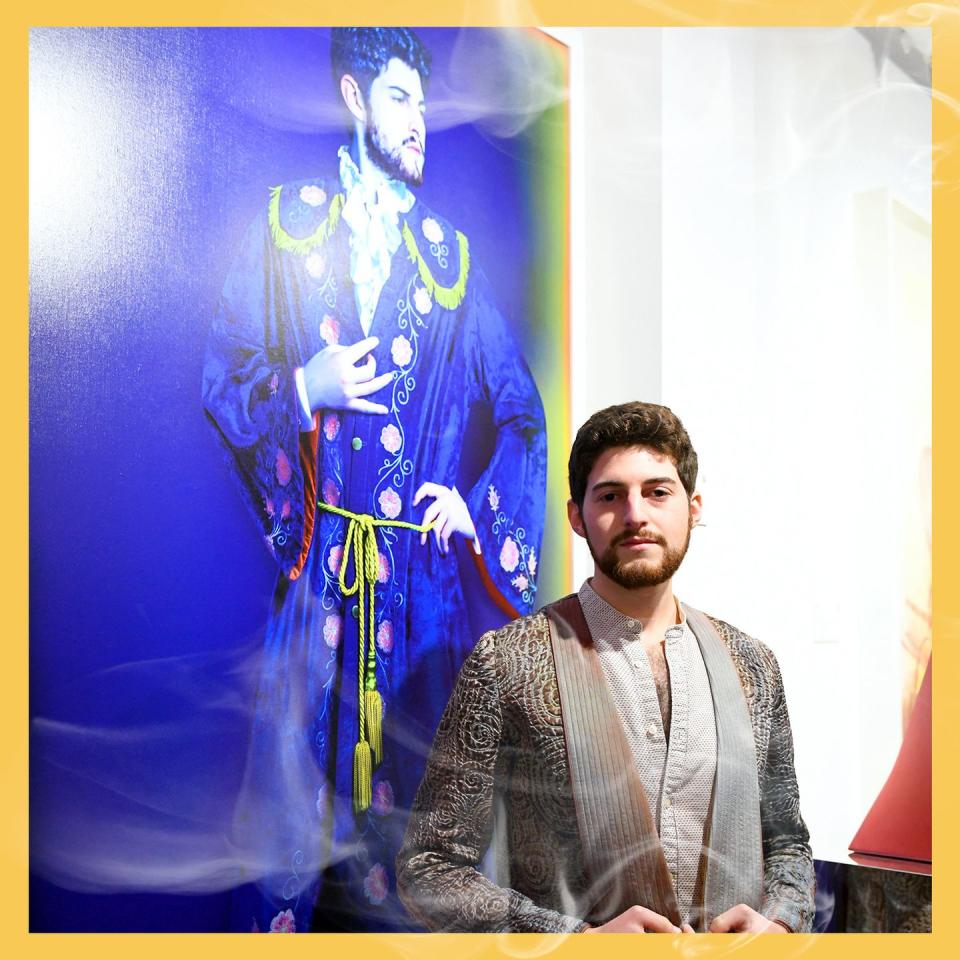
The art exhibit showcased hundreds of thousands of dollars in bongs, collected by Milstein after he cashed in big on some cannabis stock in 2013 when he was 17, just as cannabis was becoming legal in Colorado. With money in pocket and an interest in the cannabis industry, he found his way into a world of trained artists who had dedicated their time to making bongs, or “functional glass art” to those with more artistic sensibilities, that were remarkable—a resurgence of the industry after Operation Pipe Dreams had shuttered it. Some of them sold in head shops for thousands or on the road with, who else, the Grateful Dead, wherever the legal line could be toed. Others were exchanged via social media interactions or at private shows, out of the public eye. Milstein was young, looking to own something of his own, and this fit the bill. He wanted to amass a collection of bongs from the best artists he could find and present them to the rest of the world.
“Because this industry was highly stigmatized, and really because it was illegal and it's still really in a grey space...it was really hard to find [the artists],” he says. “They all had pseudonyms, first off. And then some of them keep their pseudonyms now, just because it started in a place where you had to be really careful about who you told about your artwork.”
He tracked them down, across the country and even into Japan, getting tips from the artists he visited as to where he could uncover more artists. He also spoke publicly, collected pieces, and even started a traveling art gallery called Grey Space Art (get it?) to showcase the works; the Chateau Marmont exhibit was a Grey Space production. He basically made himself into the whiz kid of high-end bong art.
“The idea was, whenever I saw an amazing bong from an artist, I closed my eyes. I'd say, ‘Is this piece beautiful enough, in my mind, to in 10-to-20 years be on a pedestal somewhere with someone with white gloves carrying it to an auction block?’” he says.
Apparently, hundreds fit the bill. Milstein, who was named to Forbes’ “30 Under 30” list in 2018, has a collection that numbers some 250 bongs, worth more than a million dollars. And these days, he’s not even doing much to resell the pieces in it. He calls himself an advocate for the industry on a mission to spread the good word about bong art, even spending last summer writing a forthcoming thesis about it at the University of Cambridge, because no one had done it before.

Now, he’s got his white glove auction, too, in which three pieces, including a gigantic trilobite fossil-shaped bong from his collection made by artists Buck and Darby Holm, will be publicly bid on by anyone who can recognize good value when they smoke with it. This weekend, while online bids are open but before the auction goes live, all three will be displayed at Heritage’s booth at ComplexCon in Chicago for the public to gawk at. It’s the most aggressive step functional glass art has taken into the tightly patrolled art world yet.
About these art bongs. They’re made with borosilicate glass—as are other, less radical bongs, as well as laboratory tools like graduated cylinders and microwave-safe glass bowls—because it won’t break under extreme heat duress. Their value is judged by hours worked and technique, but primarily, by artist name recognition. Functionality is less prized, although all these bongs are supposed to be smoke-able. (If you want an idea of how tricky glass blowing is, watch a few minutes of Netflix’s new competition show Blown Away.)
Every bong artist, the overwhelming majority being men, has their own aesthetic. Artist Zach Jorgenson crafted a katana bong, upon which he used the millefiori glass-working technique to imprint Van Gogh's “Starry Night.” Quave, whose technical prowess puts him at the top of the art bong game, invented Klein recycler bongs that send water and vapor back through the piece to be reused. Buck does bones, as in terrifying T-Rex fossils, spiny fish skeletons, and even a golden-maned tribute to Cecil the Lion, gone too soon.
Bob Snodgrass made it big in the ‘80s by selling his pieces to Deadheads along the tour route for the band and is perhaps the most legendary of these glassblowers. His bubbly, cloudy pipes, oftentimes fashioned to look like melting skulls, are made by fuming gold into the glass.
In all, Milstein estimates there are about 20 of these elite glassblowers selling their stuff for more than $25,000.
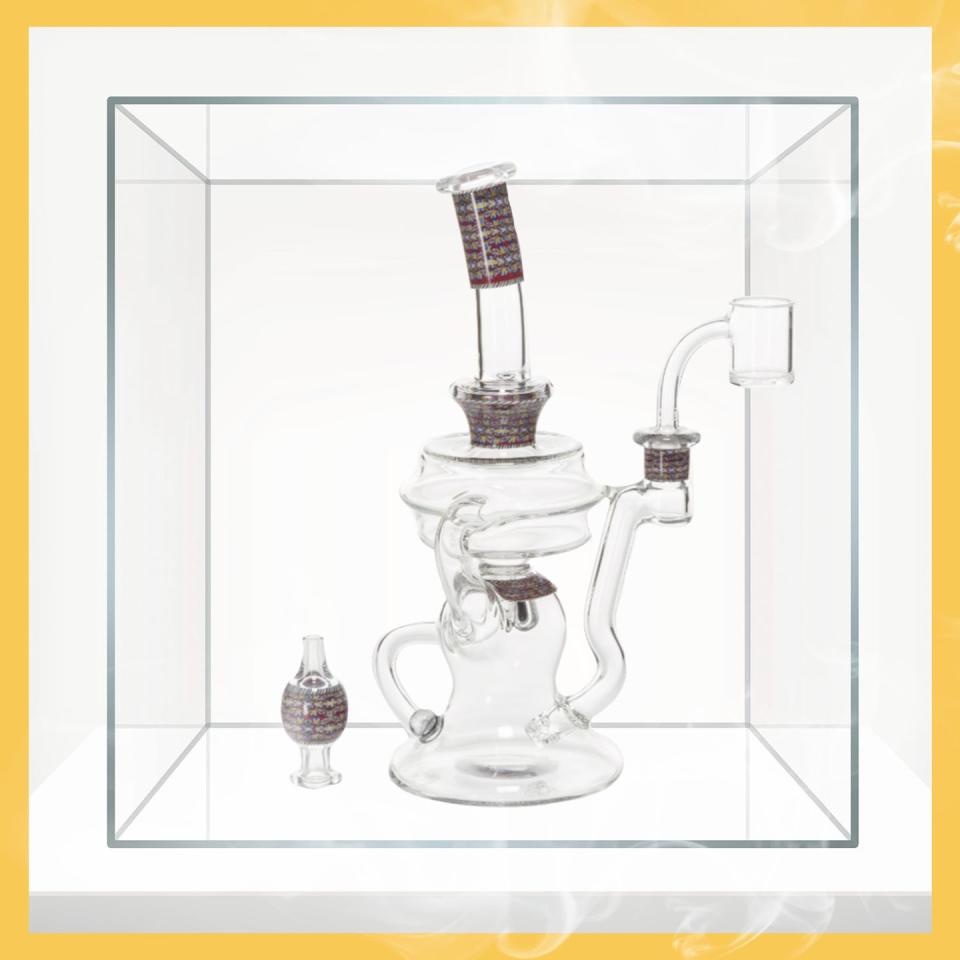
The first glass pipe artist Kurt B ever saw was a Snodgrass original. At least, that was the story; it could have been a knock-off. His friends had purchased it from a Grateful Dead show in the mid-’90s. By the end of the decade, Kurt had graduated high school, gathered some tools, and taught himself to work flame to melt glass. He lived in the back office of a head shop in Vermont, and used its studio as a workshop. After the turn of the millennium, he was supporting himself financially by selling his pipes. When the feds cracked down in ‘03, he wasn’t a target.
“For me, it was never about the money or never was really a career choice,” he says. “It was like a hobby that became a lifestyle, and maybe I'll make a buck here or there and keep myself calm, you know? But yeah, I didn't suffer too much from those times, but people had. They went to jail.”
Sometime after the hobby became a career, the career became an artform. For most of this decade, Kurt’s work has been as widely known as a bong maker’s work can be—in particular, his Honey Bear series, which replicates the bear-shaped honey bottle your mom kept in the cupboard.
“They were made to look like the makeshift plastic honey bear bong that every adolescent kid made when they were trying to make a bong and looked in their kitchen covers for the coolest-looking bottle,” he says.
Kurt made 100 in total, dated and signed them so that they couldn’t be ripped off or mass-produced, and then broke the mold. But now, he’s made his first solo bear since ending the series, honey bear number 101, for the upcoming auction: the "Kintsugi Honey Bear." Kintsugi is a Japanese process of taking broken porcelain and mending it back together with gold, and his bear looks like that—blue and white china porcelain broken and reformed into an exquisite little bear with gold seams. Milstein actually suggested the kintsugi element for the bear, after seeing Kurt’s previous experimentation with imitating porcelain.
“I wish I had some really prolific reasoning, like the broken relationship between the U.S. and China and the honey trade,” says Kurt B about the kintsugi honey bear’s backstory. “I don't really… I could make something up. But the reality of it is, I was making the blue and white china, and it was through progression, I did the kintsugi.”
It took him a month—i.e. “way too fucking long”—to finish it, figuring out how to turn borosilicate glass into something that looked like fine china, broken and rebuilt to be just as, or more, beautiful.
Even though the bidding for his kintsugi bear is estimated to hit as high as $12,000, Kurt still sees it as pure craft.
“I never really even looked at this as an art. I mean, I guess it is an art,” he says. “I've always kind of looked at myself as a craftsmen-type guy, a guy that just make stuff. There's definitely been pieces that I've made pre-recognition that were conceptual and in my opinion, that I was making them as an art piece. But overall, I just always saw myself as a craftsman.”
Milstein is more effusive.
“The coolest part about this medium is that these artists are really doing things with glass that no one has ever done before,” he says.
And there are interested buyers.
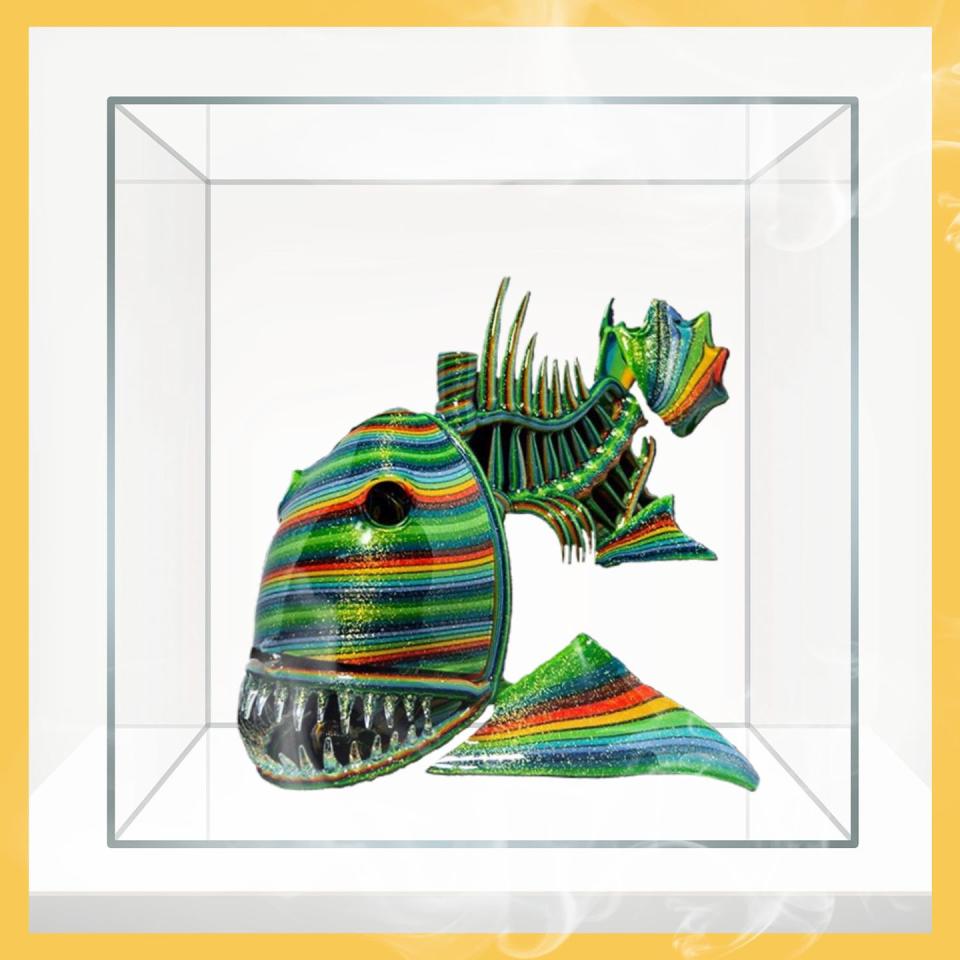
When cannabis hit its first round of legalization, a lot of people made a lot of money fast, just like Milstein. They wanted to invest it in something, like a young celeb might put their money into a Maserati. Smokable bong art was a great option. The biggest market for functional glass art is still the cannabis industry, although other buyers include Action Bronson, professional athletes, and music industry players.
Milstein hopes the Heritage auction gets these bongs to the people outside of those industries—more advocacy work. Its curator, Ronnie Pirovino, agrees. A cannabis user himself, Pirovino admires how they combine glass sculpting with a more experiential side—the “ritualistic event” that is inhaling from and passing a bong, he says. He curated 150 pieces—like Banksy’s early “Rude Copper” print, a plush flower ball from Takashi Murakami, and KAWS x Supreme skate decks—under the title “Disruption,” and also reached out to Milstein, whose Grey Space gallery he’d seen during Art Basel in Miami, to include some bongs, too.
Milstein talked to Kurt B about the Kintsugi Honey Bear and contributed the Buck/Darby Holm “Trilobite King” (estimated to go for at least $8k), and Quave made a new, never-ending Klein-bottle bong called “Neo-Pibo” (estimated to go for $40-to-60k) for the auction. Pirovino calls pieces like these “one of these last few art forms” that hasn’t yet received its due attention, and draws comparisons to other urban art.
“The urban art movement has come out of a rebellious spirit,” he says. “It’s come out of a fuck you type of mentality where artists have decided that the gallery system, the mainstream art world, is not the judge that they want to be judged by. They want the public to judge their work.”
But the mainstream art world is starting to take an interest, albeit modestly. The National Liberty Museum in Philly showcased a collection of bongs in 2017. Right now, a functional glass piece (an untitled work by artist David Colton) is on exhibit at the Corning Museum of Glass in upstate New York—curator Susie Silbert, who has been following this field for 20 years, calls the work “incredibly sophisticated.”
“We’re looking at it not just as a curiosity of glass-making, but as a meaningful contributor to this material and the way that it’s used in contemporary culture and production,” she says. She believes an auction like Heritage’s is a “critical development in the field,” putting it in front of the viewing public, where it can be approached as art, not as something illicit.
Kurt B hopes it draws in non-cannabis industry folks, but he remains cautious about the auction’s potential.
“I'm happy about it,” he says. “I’m just also kind of hesitant [to say] it's gonna change the world or change our careers or anything like that.”
Milstein, however, sees past the auction house to the pristine halls of America’s art museums.
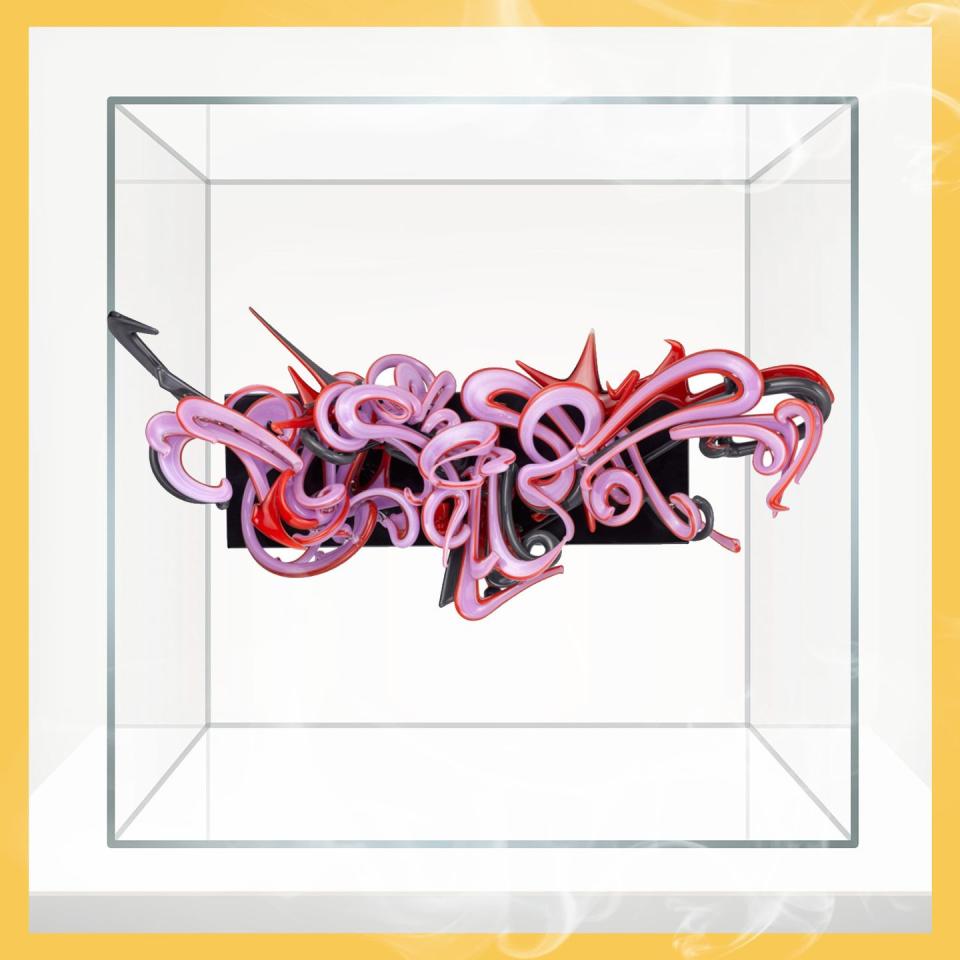
“Art's really always protest, and this is an essential story to tell in American history,” he says. “Legalization of cannabis, the communities surrounding it—this art is really the beacon that sheds light on all of that. And then outside of that, from a craft perspective, this stuff is really breathtaking. And so dually, it deserves to be in museums.”
Silbert, for her part, hopes the Colton pipe is the “first of many pipes to come” at the Corning Museum of Glass.
Pirovino calls this art “disruptive.” Milstein tends to use the word “subversive” to describe it. Kurt says it's “taboo,” American folk art that’s on the “cusp of the black market.”
The reality is, no one is getting arrested for this, not anymore. It might lurk in those dark realms, making parents and Republicans deeply uncomfortable by reeking so blatantly of pot culture. It’s good old-fashioned Americana protest art, but what is it protesting, exactly? The people campaigning against marijuana are losing their fighting ground. So maybe, now, it’s fighting for the right to drop thousands on legitimate art from which to smoke weed that, if you're lucky, you won’t be punished for possessing.
The older, dirtier bong might be disappearing, but another kind of bong could emerge: the clean, high-class, conceptually astounding bong. It wouldn’t be an artifact of stoner years gone by, but a trophy of its time, worthy of the high-caliber cannabis people are legally growing these days, destined for art galleries and museum shelves.
It would beat vaping.
You Might Also Like

